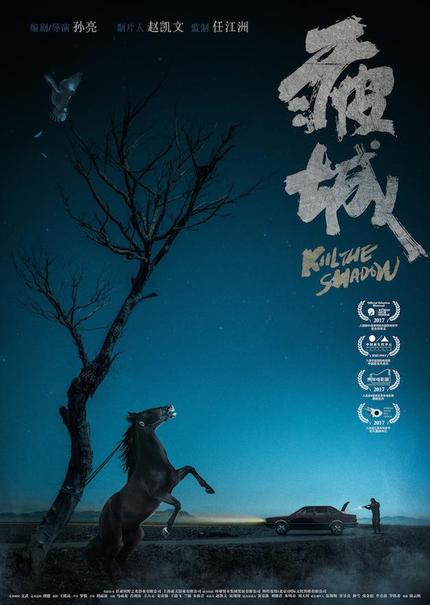Pingyao 2017 Review: In KILL THE SHADOW, Chinese Social Realism Collides with Genre Fare

In 2016, Jia Zhangke produced Life After Life by debuting director Zhang Hanyi and the film began touring the festival circuit.
The drama, peppered with deadpan humor on several occasions, pondered on uneventful life in a Chinese rural area. And while a ghost roamed the barren land, the whole apparition is of a surreal nature rather than a spiritual one within the context of the film. A giant boulder descends from a hill by itself but that comes from an inventory of the absurd. Nevertheless, Life After Life serves as an example how a certain style, in this case lo-fi surrealism, can be (re)worked and re-purposed for a different kind of outcome.
The minimalist form of surrealism serves young debuting Chinese filmmaker Sun Liang as a dramaturgic device in his first feature-length directing effort Kill the Shadow. Liang´s film starts in media res, no prologue or foreshadowing whatsoever, only the protagonist and a wad of cash whose illicit and violent acquisition is made clear enough.
The young Chinese director welcomes the audience in eerily familiar territory. Small ramshackle houses, old crooked streets, barren plains, rural town and decrepit apartments line up as visual cues for a genre euphemistically titles socio-economic realism or less delicately referred to as poverty porn. The protagonist wanders through a destitute maze; however, the setting is not the purpose but a tool.
The protagonist flees. He spends all the time in an obsessive and paranoid compulsion, looking back over his shoulder as he attempts to escape, his flight missing the point of departure and the point of arrival. The money does not improve his situation; on the contrary, it banishes him into an earthly version of an abyss where he is in a constant state of agitation, robbed of any peace. In this case, hell is not other people, hell is thyself.
Kill the Shadow widely employs easily identified genre codes as crime, heist, thriller or even modern-day revitalized Western. On one hand, the genre infusion diverts attention from the tableaux of impoverishment as a political commentary while continuing to profit from its aesthetics and locations. On the other, the writer-director can focus on the actual plot as the film remains action-driven until the final showdown/reckoning.
Despite the medley of different elements, Kill the Shadow preserves the coherency and the components tight through aesthetics of austerity, surely partly triggered by the project's size and budget limitations. And that might have been the reason that led Sun Liang to experiment more with the medium to maximize the experience. The spare surrealism manifests itself in the scrambled timeline of the story, as past and present intertwine and several callbacks in the elliptical narration gradually reveal motif and circumstances of the protagonist's actions.
However, unwittingly to the viewer, the writer-director switches the mode of Dr. Caligari, which becomes explicit halfway through the running time. If the surrealism remains the basic design to rattle the linear storyline into nightmarish flight, the expressionism cements the merry-go-round of genre tropes, centralized on the protagonist and his unhinged state of mind.
Despite the variety of ingredients, the result is fairly streamlined and assembled coherently, resulting in a closeted morality as the frenzied runaway from justice is the externalization of a delusional guilt trip the leading character experiences vividly, as the poverty drama of social realism collides with genre fare and austere aesthetics absorbs expressionistic stylization.







